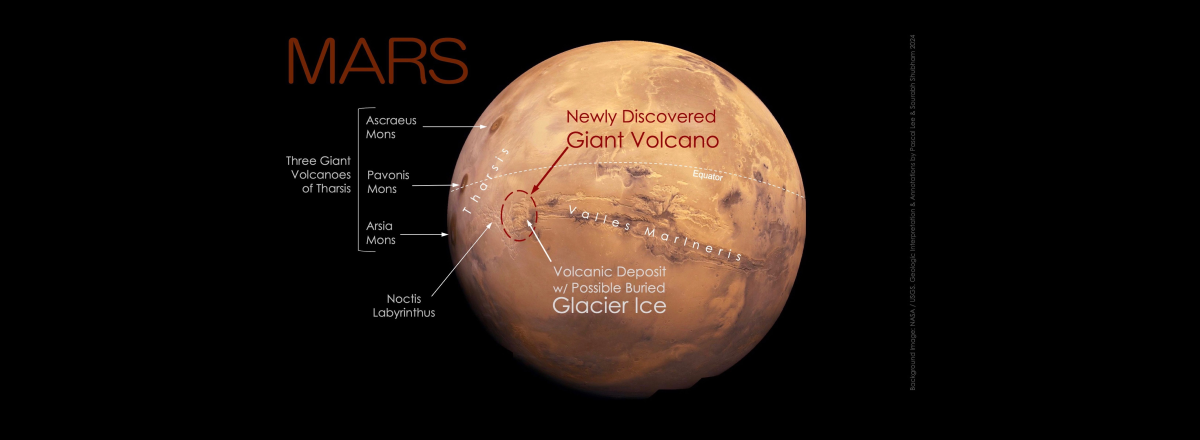Massive Eroded Volcano Discovered on Mars with Potential Water Reserves
With its complex erosion patterns and the speculative presence of glacier ice, the volcano emerges as a prime target for future explorations, both robotic and human, in the quest to unravel Mars's mysteries and potential habitability.

Astronomers have unveiled the discovery of a colossal, eroded volcano on Mars, hidden in the Noctis Labyrinthus region, suggesting potential water reserves beneath its surface. This nine-kilometer-tall volcano, yet to be named, has eluded detection for decades despite its towering presence. The revelation combines data from various Mars orbit missions, shedding light on a landscape shaped by volcanic activity and potential water interactions.
The discovery highlights the volcano's ancient activity, evidenced by mineral formations indicative of volcanic rocks in the presence of water. This ignites curiosity about the region's geological past and the possibility of ice remnants at the volcano's base, pointing towards Mars's sustained seismic and geological dynamism.
This intriguing Martian landmark not only opens new avenues for understanding the planet's volcanic and hydrological history but also raises questions about life-sustaining conditions in its ancient past.
With its complex erosion patterns and the speculative presence of glacier ice, the volcano emerges as a prime target for future explorations, both robotic and human, in the quest to unravel Mars's mysteries and potential habitability.

